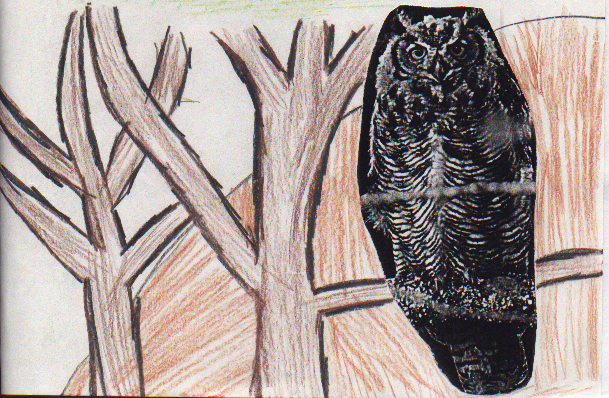 This collection of student work is from Frank Keim's classes. He wants to share these works for others to use as an example of culturally-based curriculum and documentation. These documents have been OCR-scanned and are available for educational use only.
This collection of student work is from Frank Keim's classes. He wants to share these works for others to use as an example of culturally-based curriculum and documentation. These documents have been OCR-scanned and are available for educational use only.Special | A | B | C | D | E | F | G | H | I | J | K | L | M | N | O
P | Q | R | S | T | U | V | W | X | Y | Z | ALL
The Great Horned Owl by Yvonne Evan:The Great horned owl is very large. It has widely spaced ear tufts and bright yellow eyes. It also has a white throat that often forms a vertical blaze down the middle of the breast. The Great horned owl breeds from the northern tree limit south through the lower 48. It also breeds through Central and South America. Some of them are nonmigrant. The Great horned owl's sounds are low hoots, deeper and lower than those of barred owls. The calls of the male and female are slightly different in pitch. They also scream and give cat-like meows. Its diet includes skunks, ducks, domestic cats, water fowl, oppossums, hawks, great blue herons, and even porcupines. Sometimes when it hunts the porcupine, it could be killed or hurt badly. The Great horned owl is very adaptabe to any kind of environment. It can live in deep forests, open country, or in city parks where rats are its primary food. In late afternoon or evening these birds often perch on telephone poles or on top of dead tree snags searching for prey. They are early nesters. Females are sometimes found incubating eggs beneath a blanket of snow. Some species similar to the Great Horned owl are the Barred, Spotted, Great gray and Snowy owls. These all lack ear tufts, closer facial disks and more boldly patterned markings. Yvonne Evan | |
|




